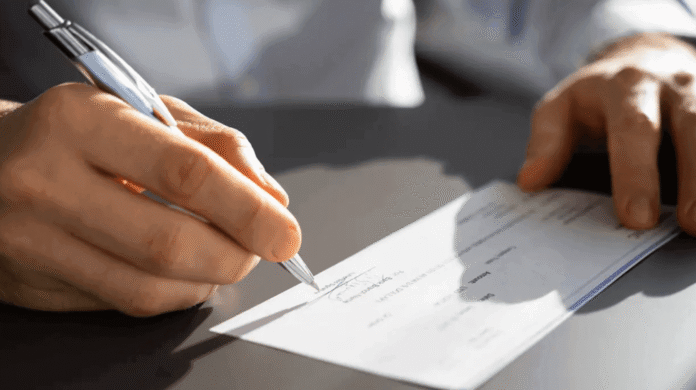Voiding a check is a simple yet essential process that helps protect your financial security. In this comprehensive guide, we’ll walk you through the steps to void a check and discuss why it’s necessary, along with some common scenarios where you might need to do so. By the end of this article, you’ll be well-equipped to safeguard your financial information and prevent potential fraud.

What is a Voided Check?
A voided check is a regular check with the word “VOID” written across it, rendering it unusable for any transactions. Voiding a check ensures that it cannot be cashed or deposited, preventing unauthorized access to your funds.
Reasons to Void a Check
There are several situations where voiding a check may be necessary, including:
Setting Up Direct Deposit
When you set up direct deposit for your salary, your employer may require a voided check to verify your account number and bank routing number.
Electronic Payments
When enrolling in automatic bill payments, companies often request a voided check to confirm your account information.
Incorrectly Filled Out Checks
If you make a mistake while writing a check, void it and start over with a new one to prevent potential fraud or misuse.
Lost or Stolen Checks
If you lose a check or suspect it was stolen, void it immediately to protect your financial security.
III. How to Void a Check: Step-by-Step
Choose the Right Check
Select a check from your checkbook that has not been used or written on yet.
Write “VOID” Across the Check
Using a black or blue ink pen, write the word “VOID” in large, clear letters across the front of the check. Make sure it covers the check number, routing number, and account number without completely obscuring them.
Record the Voided Check
Document the voided check in your check register or financial records, noting the check number and the reason for voiding it.
Store the Voided Check Securely
Keep the voided check in a safe place to ensure it doesn’t fall into the wrong hands.
Notify the Relevant Parties
If you void a check due to an error or loss, inform the intended recipient or your bank to avoid any confusion or potential issues.
IV. How to Void a Check if It’s Already Been Written
If you’ve already filled out a check and need to void it, follow these steps:
Write “VOID” on the Front of the Check
As before, write “VOID” in large letters across the front of the check without completely obscuring the account and routing numbers.
Destroy the Signature
To further protect your financial information, use a black or blue pen to scribble over your signature, making it unreadable.
Record the Voided Check and Notify Relevant Parties
As with an unused check, document the voided check in your financial records and inform the intended recipient or your bank about the situation.
V. Alternatives to Voiding a Check
If you don’t have a check to void, you can provide your account information through alternative methods:
Bank Letter
Contact your bank and request a letter confirming your account and routing numbers. Some institutions
Bank Statement
A recent bank statement may also be used to verify your account information. Be sure to redact any sensitive information, such as your account balance or other transactions, before submitting the statement.
Printed Deposit Slip
A printed deposit slip from your checkbook typically includes your account and routing numbers. You can submit a copy of the deposit slip as an alternative to a voided check.
VI. Important Tips for Voiding Checks
Never Use Pencil
When voiding a check, always use a pen with permanent ink to prevent someone from erasing and altering the information.
Avoid Sharing Voided Check Images Online
Sharing images of voided checks on social media or other public platforms can expose your financial information to potential fraudsters.
Monitor Your Account Activity
Keep an eye on your account for any suspicious transactions, even if you have voided a check. Report any discrepancies to your bank immediately.
Conclusion
Voiding a check is a straightforward process that plays an essential role in safeguarding your financial security. By understanding when and how to void a check, you can avoid potential fraud and maintain control over your finances.
Protect your financial security by learning how to void a check! Share this comprehensive guide with friends and family to help them safeguard their finances as well.
FAQs on Voiding A Check
Is it safe to give someone a voided check?
Yes, as long as you trust the person or organization requesting it. A voided check only contains your account and routing numbers, which are necessary for setting up direct deposits or electronic payments.
Can I void a check online?
No, voiding a check requires physically writing “VOID” on the check itself. However, you can cancel or stop payment on a check through your bank’s online platform.
Can a voided check be cashed?
No, a voided check cannot be cashed or deposited since it is marked unusable.
Do I need to keep a record of voided checks?
Yes, it’s a good practice to document voided checks in your financial records to track and maintain accurate account information.
What if I don’t have a check to void?
You can provide your account information through alternative methods such as a bank letter, bank statement, or printed deposit slip.


